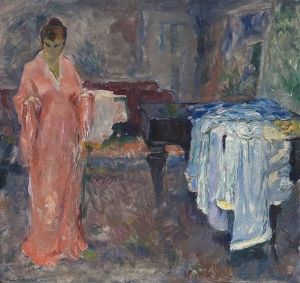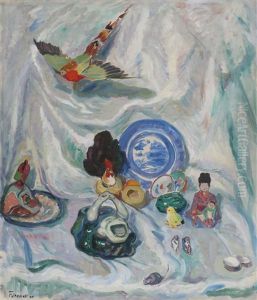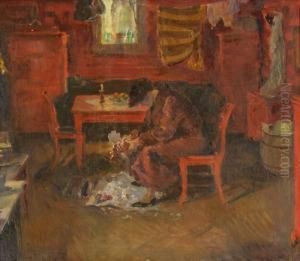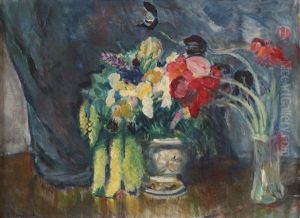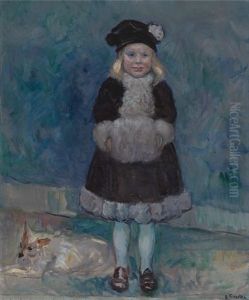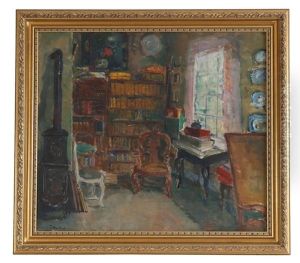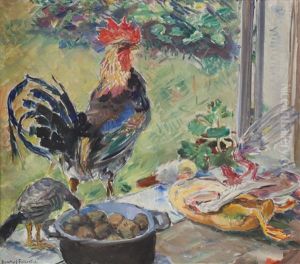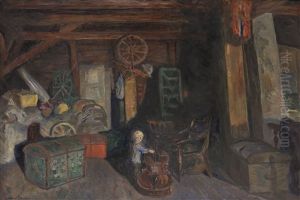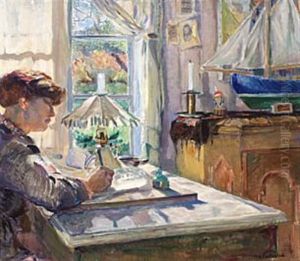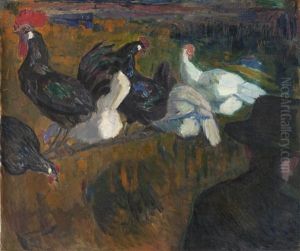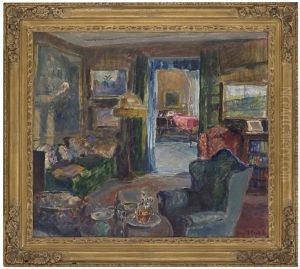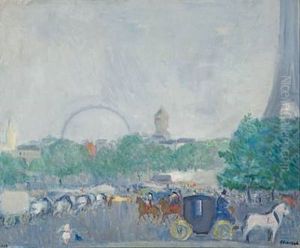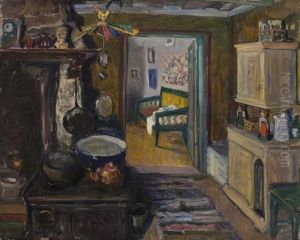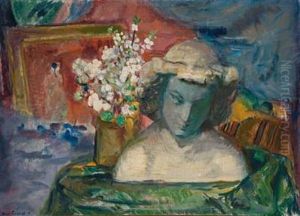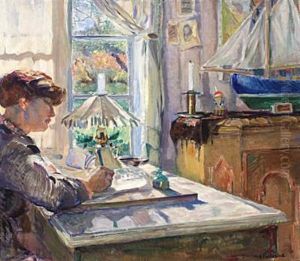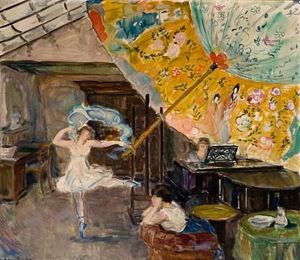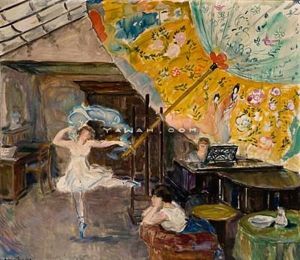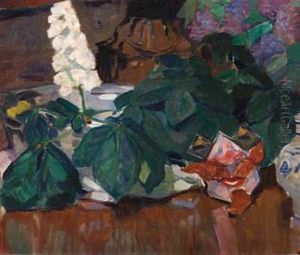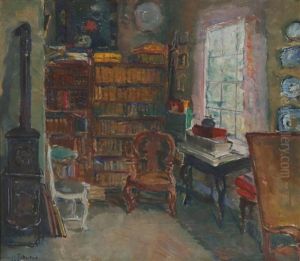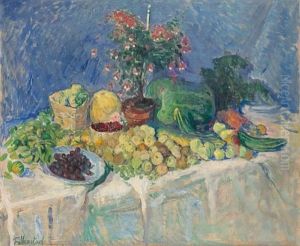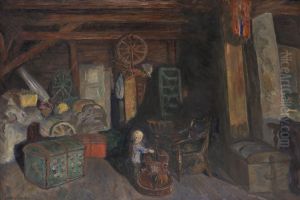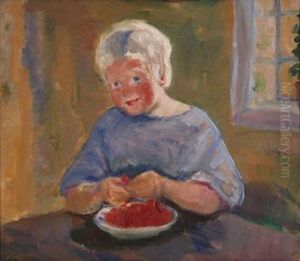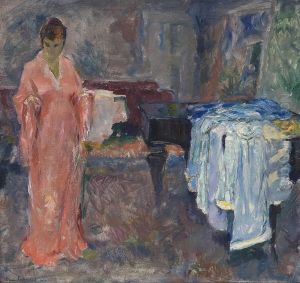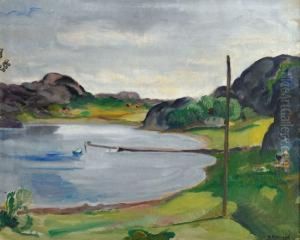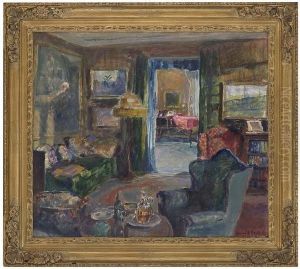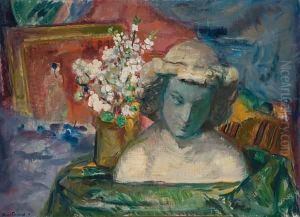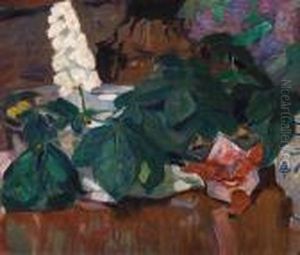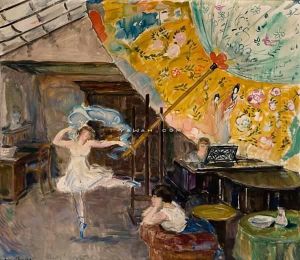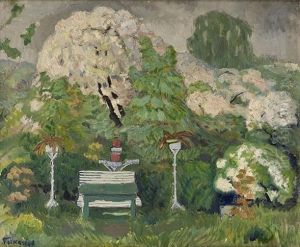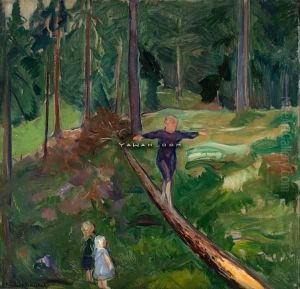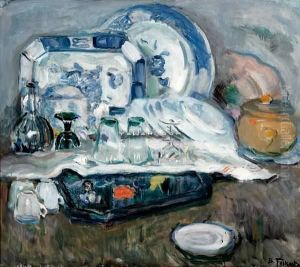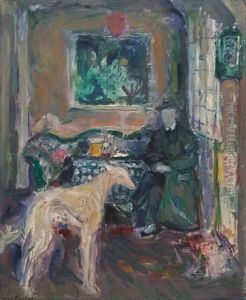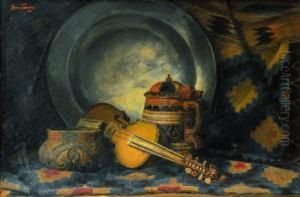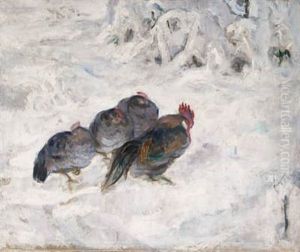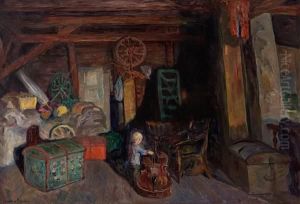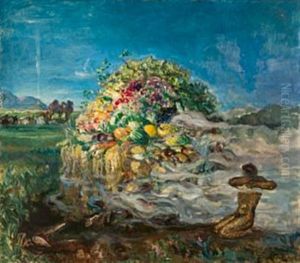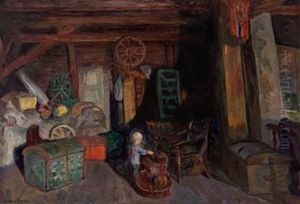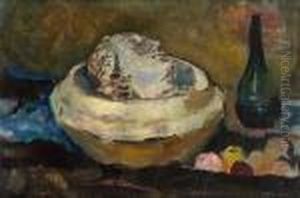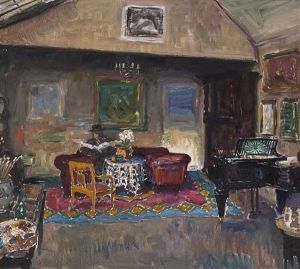Bernhard Folkestad Paintings
Bernhard Folkestad was a Norwegian painter and essayist, born in 1879 in the bustling city of Oslo, which at the time was known as Christiania. He is remembered for his contributions to early 20th-century Norwegian art, bringing a unique perspective through his paintings and literary work. Folkestad's artistic journey began at an early age, showing a keen interest in the arts. He pursued his passion by studying under various prominent Norwegian artists, which deeply influenced his style and approach to painting.
Folkestad's work is characterized by its diverse range, including landscapes, portraits, and still lifes. His landscapes often depict the serene and majestic Norwegian countryside, capturing the essence of its natural beauty. He was adept at portraying the subtle interplay of light and shadow, which added a lively and dynamic quality to his work. Portraits by Folkestad often conveyed deep psychological insights, reflecting the personality and inner world of his subjects. His still lifes are celebrated for their meticulous detail and vibrant colors, showcasing his technical skill and artistic sensitivity.
In addition to his painting, Bernhard Folkestad made significant contributions as an essayist. He wrote extensively on art and culture, offering insightful critiques and perspectives that enriched the Norwegian art scene. His writings not only illuminated his own work but also provided a broader understanding of the artistic movements and trends of his time.
Throughout his career, Folkestad participated in numerous exhibitions, both solo and group, gaining recognition and acclaim for his artistic achievements. Despite his success, he remained deeply committed to his artistic exploration, continually evolving his style and techniques.
Bernhard Folkestad's legacy is that of a multifaceted artist who bridged the worlds of visual art and literature. His paintings continue to be celebrated for their beauty and depth, while his essays remain a valuable resource for understanding the cultural and artistic milieu of early 20th-century Norway. He passed away in 1933, leaving behind a body of work that continues to inspire and captivate audiences.
